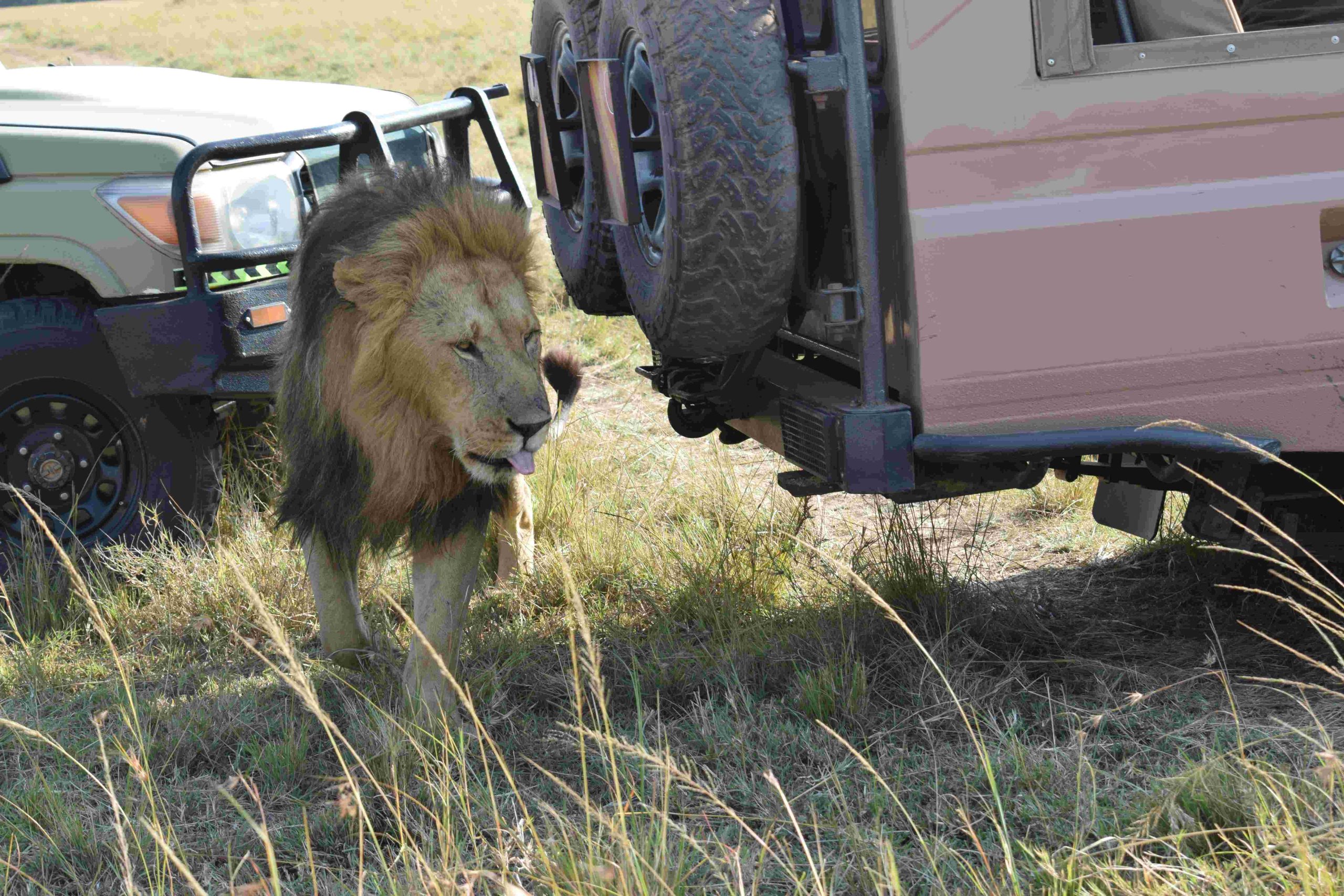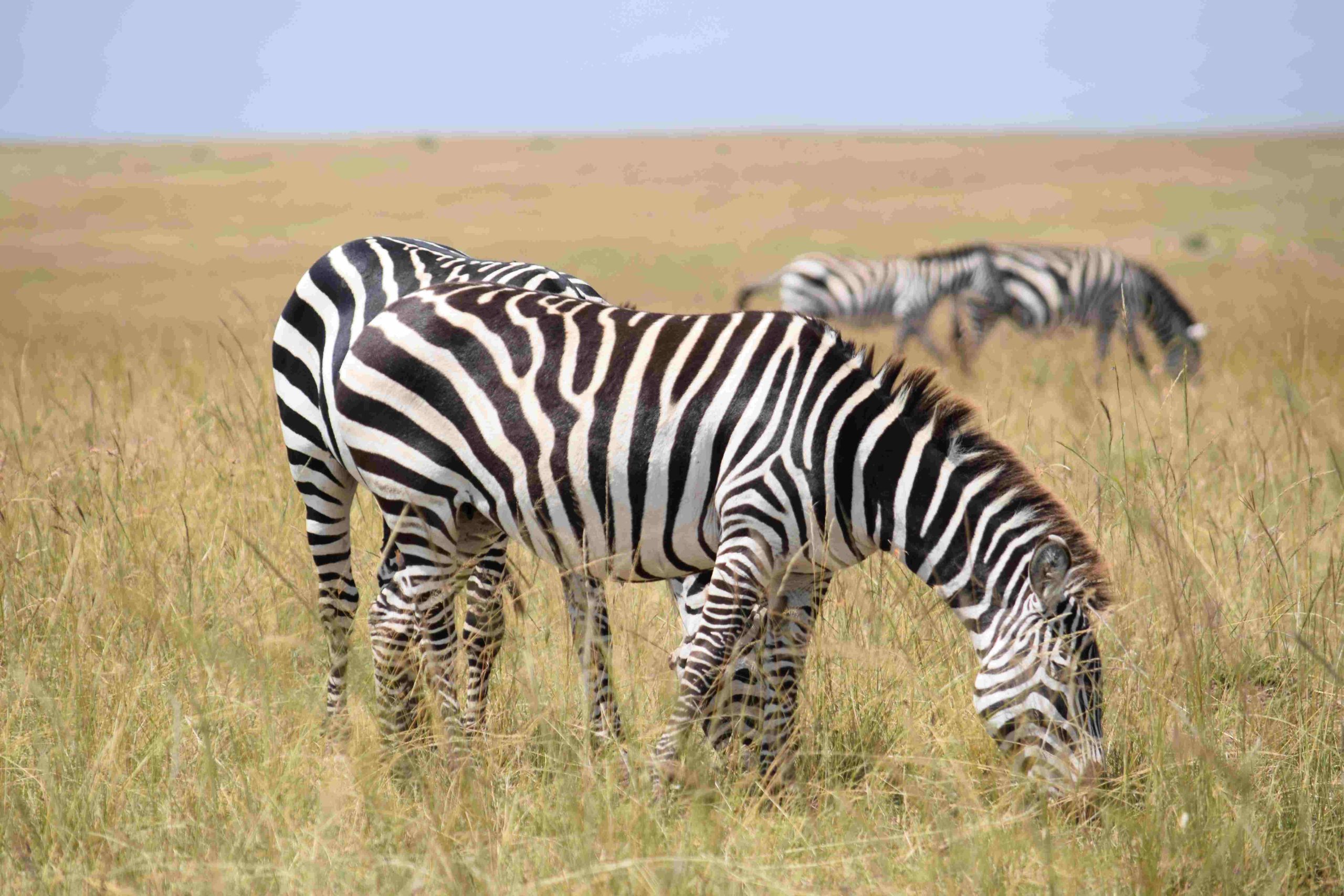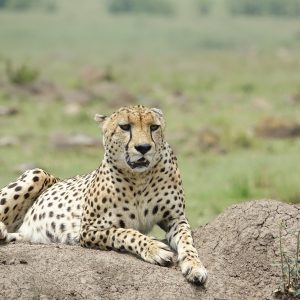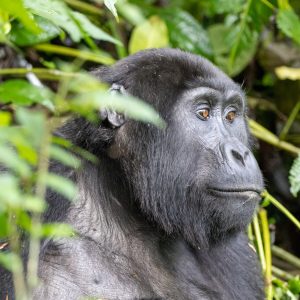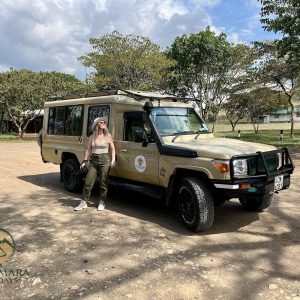3 Day Masai Mara Kenya Safari
Description
Discover the unforgettable wildlife encounters that Masai Mara has to offer with our 3-Day Safari Kenya. This safari is specially designed for travelers who want to experience the best of Masai Mara in the shortest time possible. You willl enjoy unmatched wildlife activities that are custom-made to meet your preferences.
The highlight of this 3 Day Masai Mara Safari from Nairobi is the wildlife drives that take you bouncing through the Mara Plains. You’ll have the opportunity to spot elusive elephant herds and listen to the bellowed breaths of lions. Choose between a 4×4 open roof land cruiser or an open roof 4×4 safari van based on your preference and budget. Indulge in a mandatory arranged bush breakfast experience and immerse yourself in the untamed beauty of Masai Mara.
Day by Day Itinerary
Day 1: Nairobi to Masai Mara
You will be picked up from your hotel in Nairobi in the morning and drive to the Masai Mara via the Great Rift Valley. The drive will take about 5 to 6 hours, depending on traffic and road conditions. You will arrive at your lodge or tented camp in time for lunch and check-in. In the afternoon, you will enjoy your first game drive in the reserve, where you will have a chance to see some of the resident wildlife. You will return to your accommodation for dinner and overnight.
Day 2: Full Day Masai Mara Game Viewing
You will have a full day of game viewing in the Masai Mara, starting with an early morning game drive before breakfast. You will explore different areas of the reserve and look for animals that are more active in the cooler hours of the day. You will return to your accommodation for breakfast and relax for a while. You can also opt to visit a local Maasai village (at an extra cost) and learn about their culture and way of life.
After lunch, you will head out for another game drive in the afternoon. This is a good time to see predators hunting or resting after a meal. You will also have a chance to see some of the spectacular sunsets that the Masai Mara is famous for. You will return to your accommodation for dinner and overnight.
Day 3: Masai Mara to Nairobi
You will have one last game drive in the morning before breakfast. You will then check out of your accommodation and drive back to Nairobi. You will arrive in Nairobi in the afternoon and be dropped off at your hotel or airport.
The Masai Mara
The Masai Mara National Reserve is a large game reserve located in southwestern Kenya, bordering Tanzania. It covers an area of about 1,510 square kilometers (580 square miles) and is part of the greater Serengeti-Mara ecosystem. The reserve is named after the Maasai people, the indigenous inhabitants of the area who have coexisted with the wildlife for centuries.
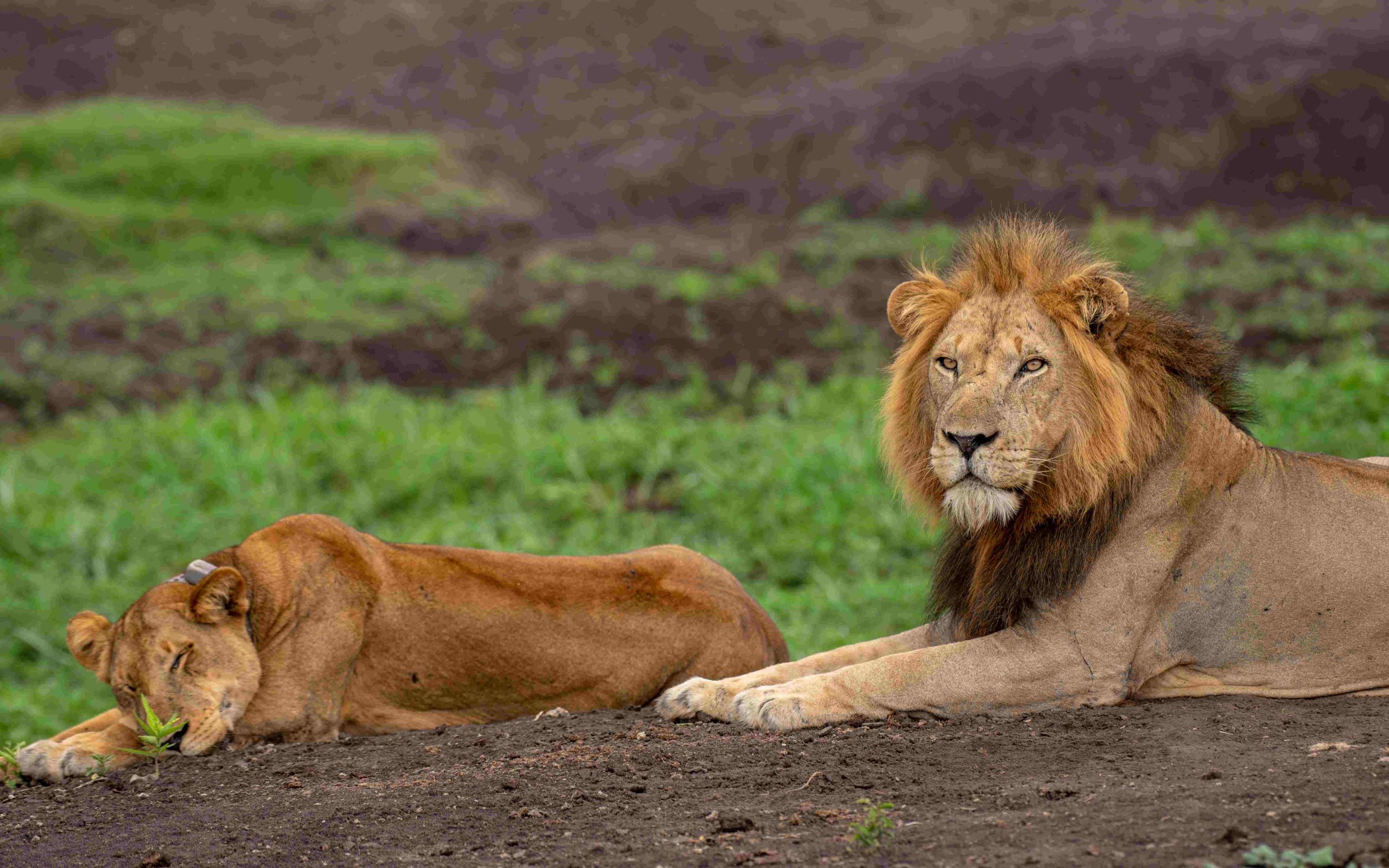
The reserve has a varied landscape, consisting of rolling grasslands, acacia woodlands, riverine forests, and rocky hills. The Mara River and its tributaries are the lifelines of the reserve, providing water and habitat for many animals. The river is also the scene of dramatic crossings during the Great Migration, when thousands of wildebeests and zebras brave the crocodile-infested waters to reach greener pastures.
The Masai Mara is one of the best places to see wildlife in their natural environment and witness their fascinating behaviors. The reserve offers year-round game viewing opportunities, with different seasons offering different attractions. The best time to visit the Masai Mara depends on your preferences and budget, but generally speaking, the dry season (June to October) is ideal for seeing large concentrations of animals and the Great Migration, while the wet season (November to May) is good for seeing newborns and lush vegetation.
Wildlife Encounters
One of the main highlights for this 3 Day Masai Mara safari from Nairobu is the incredible wildlife viewing. The Masai Mara is home to some of the most iconic and charismatic animals in Africa, as well as some rare and endangered species. Here are some of the wildlife encounters that you can expect on this 3 day safari Kenya
The Big Five
The Masai Mara is one of the best places to see all five members of the Big Five: lion, leopard, elephant, buffalo, and rhino. These animals are among the most sought-after by safari-goers and are a symbol of Africa’s wildlife heritage. You can see them throughout the year, but the dry season is better for spotting them as they tend to congregate around water sources. Lions are the most common and can be seen in prides or as solitary males. Leopards are more elusive and nocturnal, but you might get lucky and see one resting on a tree branch or stalking its prey. Elephants are majestic and gentle giants that roam in large herds or smaller family groups. Buffaloes are formidable and aggressive animals that can charge at any threat. Rhinos are rare and endangered, but the Masai Mara has a small population of black rhinos that can be seen in the dense thickets.
The Great Migration
The Masai Mara is the stage for one of the most spectacular wildlife phenomena in the world: the Great Migration. This is the annual movement of millions of wildebeests, zebras, and gazelles from the Serengeti in Tanzania to the Masai Mara in Kenya, following the rains and the availability of grass. The migration usually reaches the Masai Mara between July and October, when the animals cross the Mara River in large numbers. This is a thrilling and dramatic spectacle, as the animals face crocodiles, lions, and other predators along the way. The migration also attracts other animals, such as hyenas, jackals, vultures, and marabou storks, that scavenge on the carcasses of the fallen.
Other Wildlife
Besides the Big Five and the Great Migration, the Masai Mara has a wealth of other wildlife that you can see on your safari. Some of the other animals that you can encounter include giraffes, cheetahs, hippos, crocodiles, warthogs, baboons, monkeys, hyraxes, mongooses, servals, caracals, genets, civets, porcupines, aardvarks, pangolins, honey badgers, antelopes (such as impalas, topis, hartebeests, waterbucks, elands, kudus), gazelles (such as grants and thomsons), and many more. The reserve also has a rich birdlife, with over 500 species recorded. Some of the birds that you can see include ostriches, eagles, vultures, storks, flamingos, cranes, hornbills, kingfishers, bee-eaters, rollers, weavers, sunbirds, and many more.
Cultural Experiences
Another reason to visit the Masai Mara is to experience its cultural diversity and richness. The reserve is named after the Maasai people, who are the original inhabitants of the area and have a unique and colorful culture. The Maasai are pastoralists who live in harmony with nature and their livestock. They are known for their distinctive dress code of red shukas (cloths), beaded jewelry, and spears. They also have a strong sense of community and tradition.
On your 3 day Masai Mara safari from Nairobi, you can have an opportunity to interact with the local Maasai community and learn about their customs and way of life. You can visit a Maasai village (called a manyatta) and see how they live in circular huts made of mud and cow dung. You can also witness some of their ceremonies and rituals, such as dancing and singing. You can also buy some of their handicrafts, such as bracelets, necklaces, earrings, belts, and bags.
Visiting a Maasai village is not only a cultural experience but also a way of supporting their livelihoods and conservation efforts. The Maasai have been living in harmony with wildlife for generations and have a deep respect for nature. They also play an important role in protecting the wildlife and their habitats from poachers and encroachers. By visiting a Maasai village, you are contributing to their income and empowerment.
Safari Activities
The main attraction of a 3 day Masai Mara Kenya safari is of course the safari activities that will allow you to see the wildlife up close. There are different types of safari activities that you can choose from depending on your interests and preferences. Here are some of the most popular ones:
- Game drives: These are guided tours in open 4×4 vehicles that take you around the reserve to look for animals. Game drives usually last for 3 to 4 hours in the morning or afternoon when the animals are most active. You can also opt for full-day game drives that include picnic lunches in scenic spots. Game drives are the best way to cover more ground and see more variety of wildlife in the Masai Mara.
- Hot air balloon safaris: These are aerial tours in hot air balloons that take you over the reserve to enjoy a bird’s eye view of the landscape and wildlife. Hot air balloon safaris usually last for an hour at sunrise when the weather is calm and clear. They also include champagne breakfasts in the bush after landing. Hot air balloon safaris are a unique way to experience the Masai Mara from a different perspective.
- Nature walks and bush hikes: These are guided tours on foot that take you around the reserve to explore the flora and fauna in more detail. Nature walks and bush hikes usually last for 1 to 2 hours in the morning or afternoon when the temperature is cooler. They also include briefings on the ecology and conservation of the area. Nature walks and bush hikes are a great way to get closer to nature and learn more about the ecosystem of the Masai Mara.
Why Choose Our 3-Day Masai Mara Safari from Nairobi?
When it comes to experiencing the wonders of Masai Mara Kenya, choosing the right safari company is essential. At Tusker Trails Holidays, we stands out from the rest due to our expertise and reputation in the industry. With years of experience, we have mastered the art of crafting immersive and unforgettable safari experiences.
- One of our exclusive features is our team of well-trained guides. These passionate individuals possess extensive knowledge about the park and its wildlife, enabling them to provide in-depth insights and ensure a rewarding safari experience. Their expertise allows for exceptional wildlife sightings and an understanding of the park’s ecological importance.
- Comfort is a priority during this Kenya Safari 3 Days, which is why we partner with carefully selected accommodations that offer cozy and comfortable stays. Whether you prefer the rustic charm of a tented camp or the luxury of a lodge, we have options to suit your preferences. Each accommodation option is strategically located to provide easy access to the park and offer stunning views of the surrounding landscapes, allowing you to truly immerse yourself in the wilderness.
- What sets us apart is our commitment to providing personalized service. We understand that each traveler is unique, with different interests and needs. That is why we tailor the 3 Day Masai Mara Safari from Nairobi to meet your specific requirements, ensuring that your safari is truly one-of-a-kind. From arranging special activities to accommodating dietary restrictions, our dedicated team goes above and beyond to create a seamless and unforgettable experience for you.
Wildlife Encounters
Accommodation Options
One of the first things to consider when planning your 3 day Masai Mara safari from Nairobi is where to stay. There are different accommodation options available in the Masai Mara, ranging from budget-friendly campsites to luxury lodges. Here are some of the main types of accommodation you can choose from:
Tented camps
These are semi-permanent structures that offer a comfortable and authentic safari experience. They usually have canvas walls and roofs, wooden floors, en-suite bathrooms, and beds with mosquito nets. Some of them also have electricity, hot water, and Wi-Fi. Tented camps are located either inside or outside the reserve, and they often have communal areas where you can enjoy meals and drinks with other guests. Tented camps are ideal for those who want to feel close to nature and enjoy the sounds of the wildlife at night.
Lodges
These are permanent buildings that offer more amenities and services than tented camps. They usually have stone or brick walls, tiled roofs, spacious rooms, and modern facilities. Some of them also have swimming pools, spas, gyms, and shops. Lodges are located either inside or outside the reserve, and they often have restaurants and bars where you can enjoy gourmet cuisine and cocktails with other guests. Lodges are ideal for those who want more comfort and convenience during their safari.
The choice of accommodation depends on your budget, comfort level, and preferred experience. Generally speaking, accommodation inside the reserve is more expensive than outside, but it also gives you more time to explore the park and less hassle with park fees and gate hours. However, accommodation outside the reserve can also offer great views and access to other attractions such as local villages and cultural activities.
Some of the recommended accommodation options in the Masai Mara are:
- Mara Serena Safari Lodge: This is a luxury lodge located inside the reserve on a hill overlooking the Mara River. It has 74 rooms with balconies or terraces, a swimming pool, a spa, a restaurant, and a bar. It is one of the best places to witness the annual wildebeest migration between July and October
- Mara Intrepids Camp: This is a mid-range tented camp located inside the reserve near the Talek River. It has 30 tents with en-suite bathrooms, electricity, and Wi-Fi, a dining area, a lounge area, and a swimming pool. It offers game drives, nature walks, hot air balloon safaris, and cultural visits.
- Mara Sopa Lodge: This is a budget-friendly lodge located outside the reserve on the slopes of Oloolaimutia Hills. It has 99 rooms with balconies or verandas, a swimming pool, a restaurant, and a bar. It offers game drives, nature walks, cultural visits, and evening entertainment.
Travel Tips and Practical Information
Before you embark on your 3 day Masai Mara Kenya safari, here are some important things you need to know:
Visa requirements and travel logistics for visiting Kenya
To visit Kenya, you will need a valid passport and a visa. You can apply for an e-visa online before your trip, or get a visa on arrival at the airport. The visa fee is $50 USD for a single-entry visa or $100 USD for a multiple-entry visa. You will also need to pay a departure tax of $40 USD when leaving Kenya. To get to the Masai Mara from Nairobi, you can either take a road transfer or a flight. A road transfer takes about 5-6 hours and costs around $100-$150 USD per person. A flight takes about 45 minutes and costs around $200-$300 USD per person.
Best time to visit the Masai Mara for optimal wildlife sightings
The Masai Mara is a year-round destination, as there is always something to see and do. However, the best time to visit depends on what you want to experience. If you want to witness the Great Migration, then you should visit between July and October, when the herds are crossing the river and facing predators such as crocodiles and lions. If you want to see baby animals and lush green landscapes, then you should visit between November and June, when it is the rainy season and the animals are breeding. The peak season is from July to September, when the prices are higher and the crowds are larger. The low season is from April to June, when the prices are lower and the crowds are smaller.
Health and safety considerations for a safari adventure
To ensure your health and safety during your 3 day Masai Mara Kenya safari, you should take some precautions. First, you should consult your doctor before your trip and get vaccinated for diseases such as yellow fever, typhoid, hepatitis A, and malaria. You should also bring some medications such as anti-malaria pills, painkillers, antihistamines, and antibiotics. Second, you should drink only bottled water and avoid ice cubes and raw foods. You should also wash your hands frequently and use sanitizer. Third, you should follow the rules and regulations of the reserve and listen to your guide at all times. You should not feed or touch any animals or plants, or get out of your vehicle unless instructed by your guide. You should also respect the local culture and customs of the Maasai people.
Safari in Kenya
Kenya is one of the most popular safari destinations in the world, thanks to its diverse ecosystems, abundant wildlife, and friendly people. Whether you want to see the Big Five, witness the Great Migration, or experience the local culture, Kenya has something for everyone.
Kenya boasts a remarkable variety of wildlife, from the iconic Big Five (lion, leopard, elephant, buffalo, and rhino) to other amazing animals like giraffes, zebras, cheetahs, wildebeest, and more. You can see these animals in their natural habitats, such as savannahs, forests, lakes, and mountains. Kenya also has over 1,000 bird species, making it a paradise for birdwatchers.
Kenya safari takes you to over 50 national parks and game reserves, each with its own unique features and attractions. Some of the most famous ones are Maasai Mara National Reserve, Amboseli National Park, Tsavo National Park, and Lake Nakuru National Park. These parks offer incredible opportunities for game viewing, photography, and adventure.
One of the most spectacular wildlife events in the world is the Great Migration, where millions of wildebeest, zebras, and other herbivores move across the plains of Kenya and Tanzania in search of fresh grass and water. The best time to see this phenomenon is from July to October, when the animals cross the Mara River and face predators like crocodiles and lions.
There are many ways to enjoy your Kenya safari, depending on your preferences and budget. You can go on game drives in open vehicles, walk with guides through the bush, fly over the landscape in a hot air balloon, or watch birds from a boat. You can also interact with local communities and learn about their traditions and customs.
Kenya is a country with a rich and diverse culture, influenced by its history and geography. You can meet some of the local tribes that live in harmony with nature, such as the Maasai and Samburu. You can visit their villages, join their dances, or even spend a night in their huts. You can also explore the urban culture of Nairobi and Mombasa, where you can find museums, markets, restaurants, and nightlife.
Kenya offers a wide range of accommodation options for safari-goers, from luxury lodges to tented camps to eco-friendly resorts. You can choose the one that suits your style and budget, as well as the location and amenities you prefer. Some of the popular and highly recommended places to stay are Olare Mara Kempinski Masai Mara, Amboseli Serena Safari Lodge, Finch Hattons Luxury Tented Camp, and The Sands at Nomad.
Kenya is committed to protecting its wildlife and environment for future generations. There are many conservation efforts and sustainable tourism practices in place to ensure that the natural resources are used wisely and responsibly. You can support these initiatives by choosing eco-friendly accommodation options, donating to wildlife organizations, or volunteering in conservation projects.

